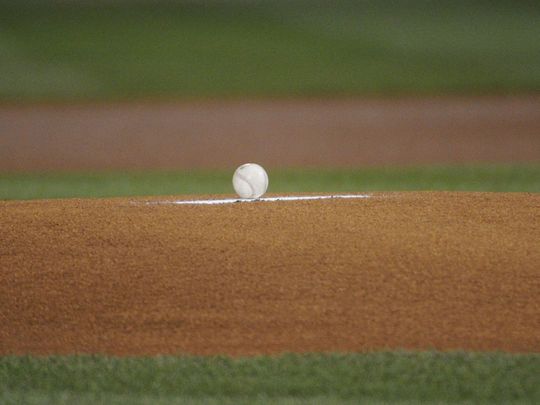In this investigation, we will attempt to see the potential impact of moving the mound back two feet, one of many rules the MLB intends to see out in the Atlantic League.
At the behest of Major League Baseball, the Atlantic League, an independent minor league based mostly in the Northeast, will try out several rule changes in the coming season. M.L.B. said its goal was “to create more balls in play, defensive action, base running, and improve player safety.”Victor Mather of The New York Times
Baseball made no promises about eventually including the changes in the majors, but presumably the experiment is not merely for academic interest.
■ The distance from the pitcher’s rubber to home plate will be increased to 62 feet 6 inches, a two-foot increase. Such a move would be an aid to batters, and would presumably cut down on strikeouts, which have drastically increased in recent years.

The formula for velocity is as followed:
V (meters/sec) = D(meters)/T(sec)
Here are the calculations for the time it takes for a 90 miles/hr pitch to reach home plate from the point in which the pitcher releases the ball (using the current distance from home plate to the pitchers mound: 60.5 ft)…
90 miles/hr = 144,840.96 meters/hr = 40.234 meters/sec
40.234 meters/sec = 60.5 feet (distance from home plate to the pitchers mound)/T (sec)
40.234 meters/sec = 18.440 meters (distance from home plate to the pitchers mound)/T (sec)
40.234 * T = 18.440
T = 0.458 seconds (18.440/40.234) from pitchers release to home plate
Here are the calculations for the time it takes for the same pitch (90 miles/hr pitch) to reach home plate from a pitchers mound that is 2 ft further away from home plate (62.5 ft)…
40.234 meters/sec = 62.5 feet (distance from home plate to the pitchers mound)/T (sec)
40.234 meters/sec = 19.05 meters (distance from home plate to the pitchers mound)/T (sec)
40.234 * T = 19.05
T = 0.473 seconds (19.05/40.234) from pitchers release to home plate
In others words, the batter would have an additional 15 milliseconds (3.28% more time) to react to the pitch.
Here are the calculations for the velocity of a pitch thrown from a mound that is 60.5 ft away (from home plate) that reaches home plate in 0.473 seconds (time it takes for a 90 miles/hr pitch to reach home plate from a mound that is 62.5 ft away)…
x meters/sec = 60.5 feet (distance from home plate to the pitchers mound)/0.473 (sec)
x meters/sec = 18.440 meters (distance from home plate to the pitchers mound)/0.473 (sec)
x = 38.985 meters/sec = 0.0242 miles/sec = 87.12 miles/hr
In gaining 15 milliseconds, hitters have more time to react to the pitch. It takes the same amount of time for a 87.12 miles/hr pitch to travel 60.5 ft as it does for a 90 miles/hr pitch to travel 62.5 ft. Theoretically, Atlantic League hitters seeing a 90 miles/hr pitch (with the mounds 2 ft further back) is the equivalent of them seeing an 87.12 miles/hr pitch thrown in the old conditions (60.5 ft between home plate and the pitchers mound).
It’s virtually the difference between seeing a Jason Vargas FB (averaged 87.0 miles/hr last season) and a Mike Fiers FB (averaged 90.0 miles/hr).
Having even slightly more time to react to a pitch should boost offensive stats by a quite a bit in the Atlantic League. I would be shocked if this is a policy the MLB adopts in the future. Pitchers have spent hours and hours refining their pitch mechanics and moving the mound back would change everything, from their release point to their arm angle. Injuries would presumably occur on a more regular basis as well. That’s not something we want. Baseball — America’s Pastime — would never be the same.

No comments:
Post a Comment
Sorry for the Capatcha... Blame the Russians :)